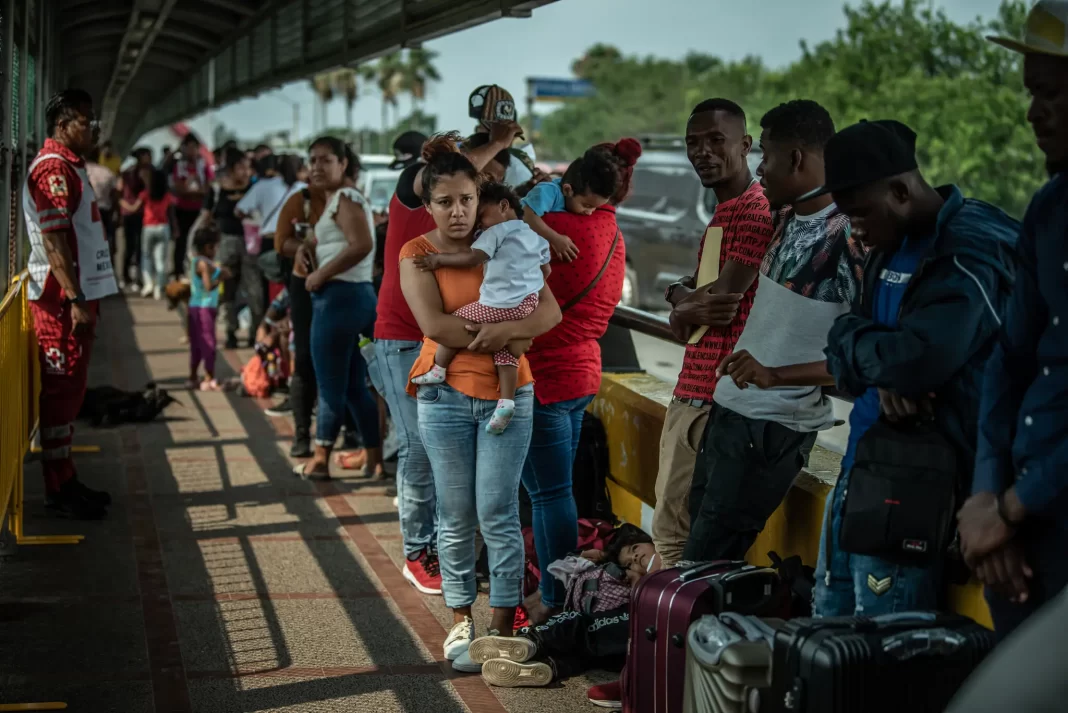Confronted with a surge of migrants, the Biden administration has decided to waive more than 20 federal laws and regulations, including environmental ones, to erect barriers along the Southern border.
President Biden had campaigned vociferously against a wall along the U.S.-Mexico border, which his predecessor had championed as a key deterrent to unlawful crossings.
Alejandro Mayorkas, the homeland security secretary, said that easing the laws was necessary to expedite construction of sections of a border wall in South Texas, where thousands of migrants have been crossing the Rio Grande daily to reach U.S. soil.
A notice published in the Federal Register on Thursday said that the secretary “has determined, pursuant to law, that it is necessary to waive certain laws, regulations, and other legal requirements in order to ensure the expeditious construction of barriers and roads in the vicinity of the international land border in Starr County, Texas.”
The U.S. Border Patrol in the Rio Grande Valley had encountered more than 245,000 migrants who had entered the country between ports of entry, or unlawfully, in the 2023 fiscal year that ended Sept. 30, the notice said.
“There is presently an acute and immediate need to construct physical barriers and roads in the vicinity of the border of the United States in order to prevent unlawful entries into the United States,” said Mr. Mayorkas in the notice.
It added that construction would be built with funds appropriated by Congress in 2019 for wall construction in the Rio Grande Valley. That appropriation followed a disaster declaration by the Trump administration amid soaring numbers of border crossers.
Mr. Biden said on Thursday that he had no choice but to use the money for the wall.
“The money was appropriated for the border wall. I tried to get them to reappropriate, to redirect that money. They didn’t. They wouldn’t,” he told reporters, apparently referring to Congress.
Asked whether he thought the border wall was effective, he replied, “no.”
In January 2021, on Mr. Biden’s first day in office, the administration revoked the disaster declaration and halted construction. In a proclamation, he said that, “Building a massive wall that spans the entire southern border is not a serious policy solution.”
In the notice on Thursday, Mr. Mayorkas said that the decision to resume construction was consistent with the purpose of the appropriated funds.
As the number of migrants entering the United States has soared in recent months, Mr. Biden has come under fire from Republican leaders, who have made immigration a core issue in the presidential race, and he has faced increasing pressure from mayors of some Democratic-led cities.
More than 2 million migrant entries were recorded in each of the last two years, creating periodic scenes of chaos in border towns. The arrivals also have overwhelmed social service providers in New York, Chicago and other cities where many have sought to restart their lives.
At a news conference Thursday morning, Mexico’s president, Andrés Manuel López Obrador, who is meeting with U.S. officials in his country, said that resumption of wall construction was “contrary” to what President Biden had been arguing.
“I understand there are strong pressures from political groups from the extreme right in the United States,” he said, “especially those who want to take advantage of the migratory phenomenon, the consumption of drugs, for electoral purposes.”
Starr County, where the 20 miles of wall is to go up, is home to about 66,000 people and is west of the city of McAllen.
The Biden administration has previously taken small steps to seal portions of high-traffic areas along the border. Last year, it closed gaps in the bollard fence erected by the Trump administration in Yuma, Arizona, which had become a busy crossing point for migrants who surrendered to border agents and claimed asylum.
Mr. Trump erected some 550 miles of the hulking, rust-colored bollard fence along the border, much of it to replace shorter, older barriers. Still, smugglers have successfully loosened beams to dig holes, or have flung rope-ladders over the structure, that have enabled many migrants to breach the border.
Starr County is home to the Lower Rio Grande Valley National Wildlife Refuge, which follows the Rio Grande along the river’s last 275-mile stretch. The Clean Air Act and Safe Drinking Water and Endangered Species Act are among the federal laws that the Homeland Security Department will waive to allow construction to proceed
Emiliano Rodríguez Mega in Mexico City and Zach Montague in Washington contributed reporting.




